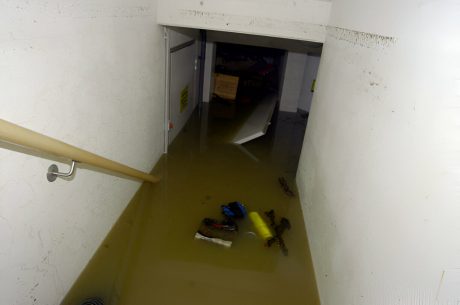After a severe storm passes, most homeowners look for obvious damage like fallen trees, broken windows, or interior flooding. But some of the most costly issues are the ones you can’t see right away. Hidden storm damage to your roof or siding can quietly worsen over time, leading to leaks, mold, insulation problems, and structural deterioration.

Table of Contents
If you live in Ann Arbor or surrounding areas prone to heavy wind, rain, and hail, here’s how to spot the signs of hidden damage before it turns into a major repair.
1. Perform a Ground-Level Inspection
Start with a walk around your home. Look for subtle signs such as:
- Pieces of shingles or siding on the ground
- Debris accumulation in gutters
- Bent or detached guttering
- Visible granules from asphalt shingles in downspouts. These are clues that your roof or siding took a hit and you might have hidden storm damage.
2. Check for Water Stains and Interior Clues
Inside your home, examine ceilings and upper walls for:
- Yellow or brown water stains
- Peeling paint or bubbling wallpaper
- Musty odors (a sign of hidden moisture) These signs often point to water intrusion from a damaged roof or exterior wall.
3. Inspect the Attic
Your attic is one of the first places storm-related leaks and hidden storm damage will show up. Use a flashlight and look for:
- Damp or darkened insulation
- Water stains on wood framing
- Mold growth or wet spots on attic floors Check during the daytime—if you see pinpoints of light shining through, you may have missing shingles or punctures.
4. Look for Siding Issues
Storm damage to siding can include:
- Cracks or splits, especially after hailstorms
- Warping or bubbling from water exposure
- Loose or missing panels from high winds
- Discoloration or mold streaks Even a single loose panel can let in moisture and pests.
5. Use Professional Tools and Expertise
Hidden damage is just that—hidden. Restoration professionals like PuroClean of Ann Arbor use moisture meters, drones, and thermal imaging to detect what you can’t see. This allows for a more complete and accurate inspection.
6. Don’t Delay Repairs
Even minor or invisible storm damage can lead to:
- Costly structural repairs
- Mold infestations
- Higher energy bills due to insulation damage
- Reduced property value Early detection saves time, money, and stress in the long run.
7. File an Insurance Claim for Hidden Damage
Your homeowner’s insurance may cover storm damage even if it’s not immediately visible. It’s a good idea to get a professional inspection within a few days of a major storm so you can file a timely claim.
8. Schedule Routine Storm Checks
Make it a habit to inspect your home after every major storm. Even if everything seems fine, schedule a professional roof and siding inspection at least once a year.
Final Thoughts
When it comes to storm damage, what you can’t see can hurt you. Hidden damage in your roof or siding can quietly compromise the safety, comfort, and value of your home. At PuroClean of Ann Arbor, we specialize in thorough inspections and expert repairs that protect your home from top to bottom. Call today to schedule your post-storm inspection or learn more about our storm damage restoration services.




 PuroClean of Ann Arbor
PuroClean of Ann Arbor